如果閱讀
《光的折射》
物理教學示範實驗教室
國立台灣師範大學物理系‧黃福坤
一段文章後,請他以幾何光學解釋人如何捕魚呢?
詢問可否用矩陣光學闡述此理的耶??假使那人循著魚身各點發出之光線,按照司乃耳折射定律,這些光線實際隨角度各向更加發散 !那麼不同『視角』下所見魚之位置能相同嗎!!
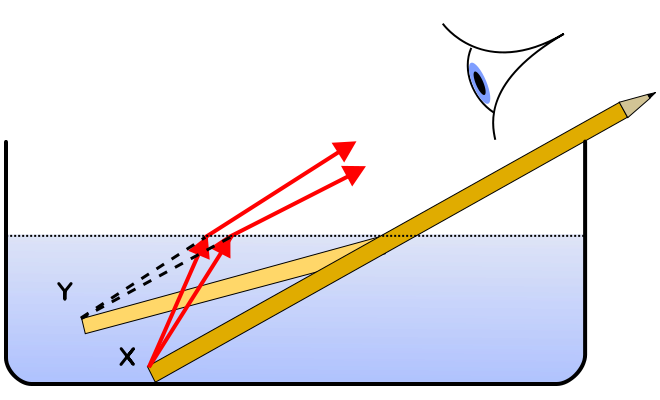
再想『眼睛』也是一光學成像系統,難到它會沒有『光軸』的乎?要是反思達爾文觀察結論的『視線圖』
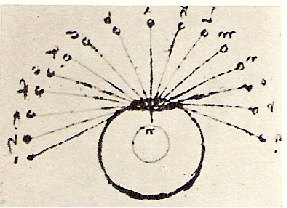
,將知僅是點點滴滴之簡單『折射』與『反射』,就能譜成大自然錯綜複雜『光之樂章』矣!!??
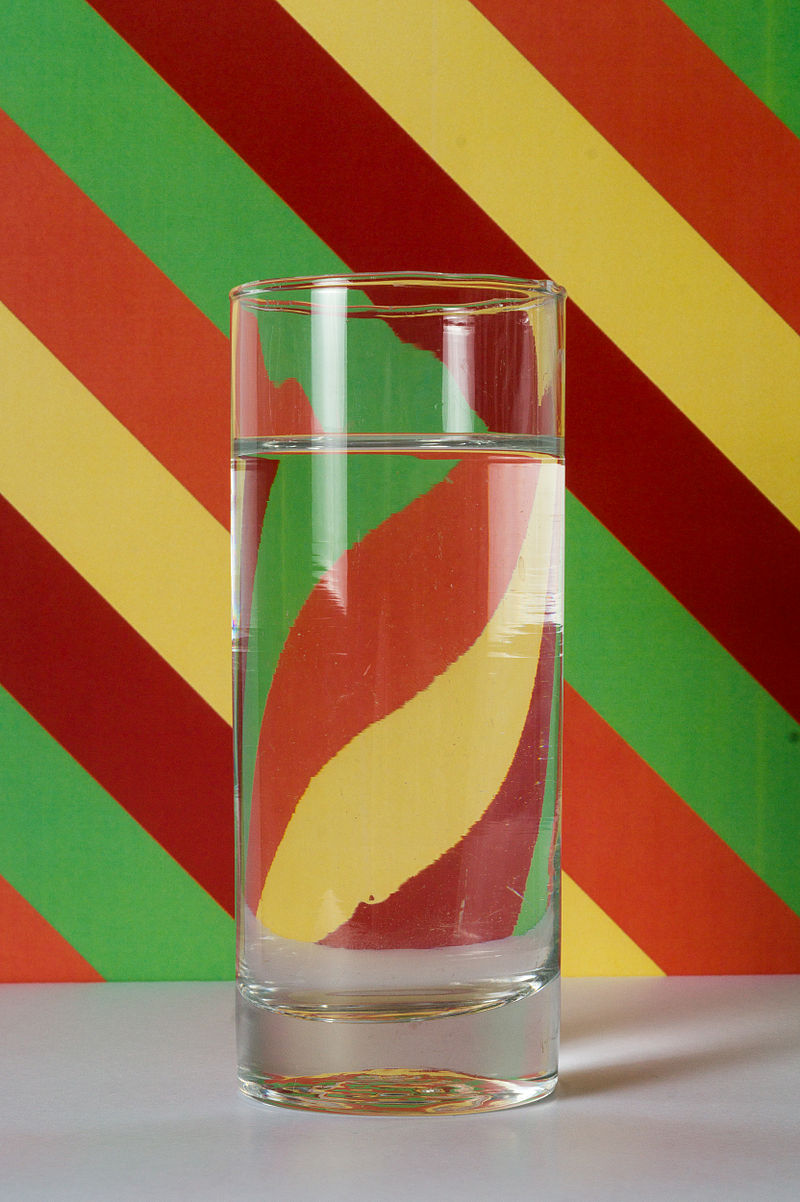
Refraction in a glass of water. The image is flipped.
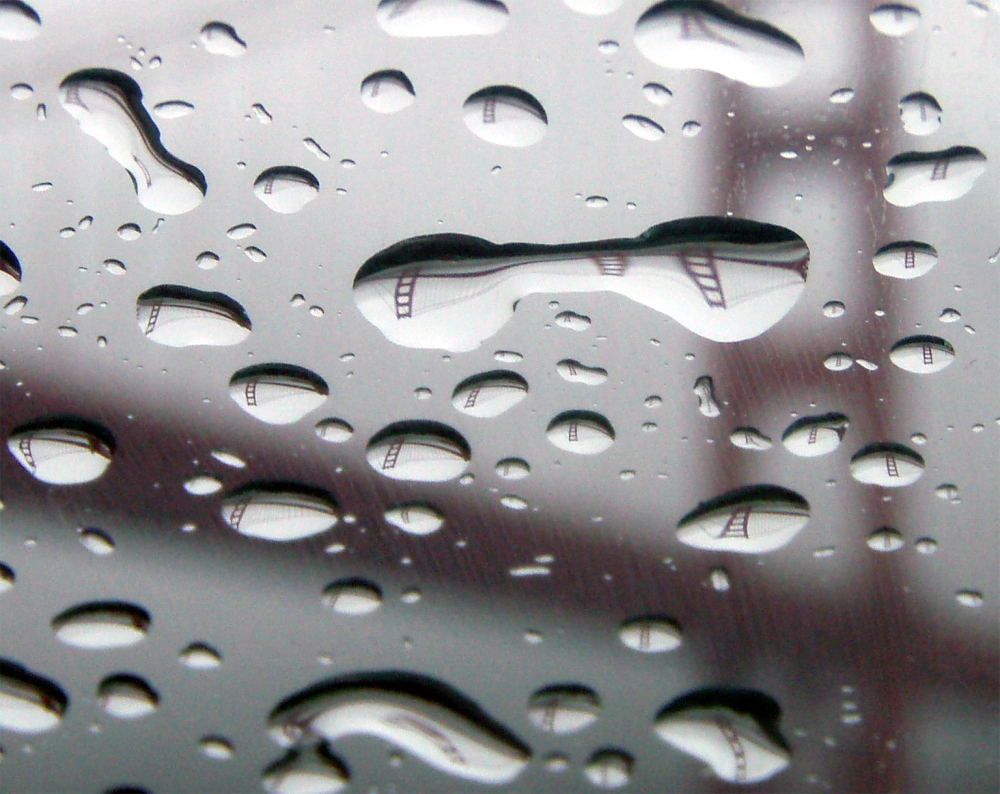
An image of the Golden Gate Bridge is refracted and bent by many differing three-dimensional drops of water.
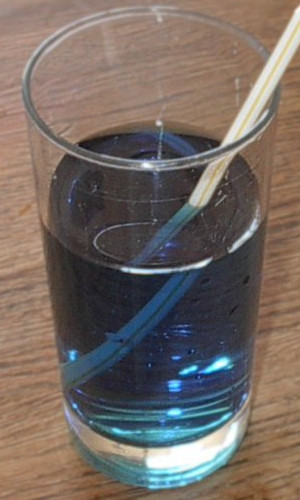
The straw appears to be broken because of the difference between the angle at which light from it strikes the vertical edge of the glass versus the horizontal surface of the water.
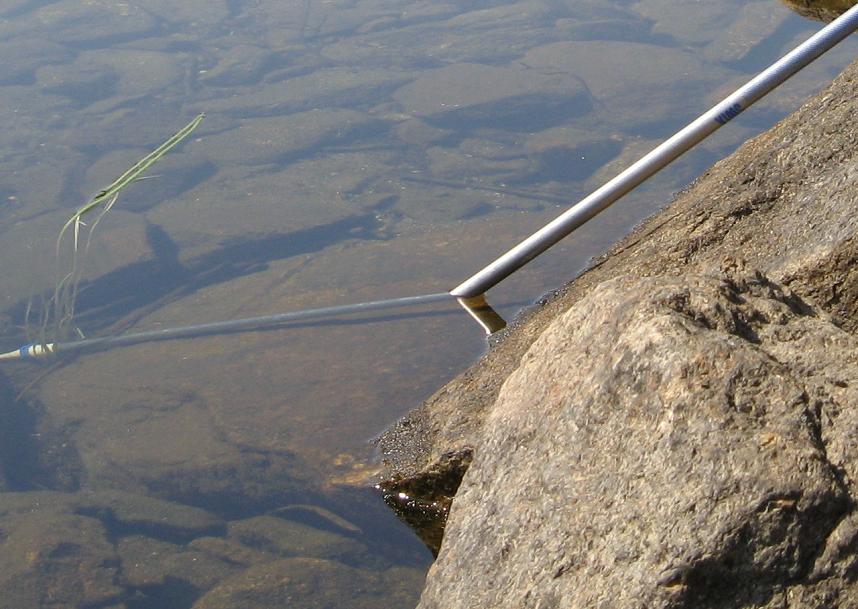
Refraction at a steep angle of incidence
或曉一般矩陣光學『所說面』皆『垂直』於『光軸』的哩!!??
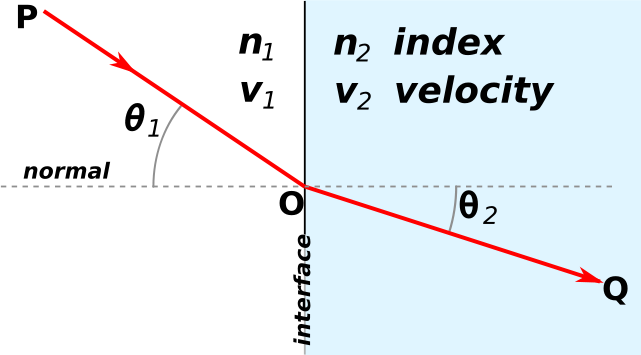
,所以『視線』接近於『從上往下』看也!!!那麼某一處在水下 ![]() 距離之魚,從上觀之見於
距離之魚,從上觀之見於 ![]() ,或可以矩陣光學表達為︰
,或可以矩陣光學表達為︰
pi@raspberrypi:~t = - \frac{d \cdot air} {water}
ipython3 Python 3.4.2 (default, Oct 19 2014, 13:31:11) Type "copyright", "credits" or "license" for more information. IPython 2.3.0 -- An enhanced Interactive Python. ? -> Introduction and overview of IPython's features. %quickref -> Quick reference. help -> Python's own help system. object? -> Details about 'object', use 'object??' for extra details. In [1]: from sympy import * In [2]: from sympy.physics.optics import FreeSpace, FlatRefraction In [3]: init_printing() In [4]: d, 水, t, 空氣 = symbols('d, 水, t, 空氣') In [5]: 莊子在t = FreeSpace(t) In [6]: 鯈魚見d = FreeSpace(d) In [7]: 空氣水界面折射 = FlatRefraction(空氣, 水) In [8]: 鯈魚觀莊子 = 鯈魚見d * 空氣水界面折射 * 莊子在t In [9]: 鯈魚觀莊子 Out[9]: ⎡ d⋅空氣 ⎤ ⎢1 ──── + t ⎥ ⎢ 水 ⎥ ⎢ ⎥ ⎢ 空氣 ⎥ ⎢0 ── ⎥ ⎣ 水 ⎦ In [10]:
如是當知縱使『光徑可逆』,並不意味『兩方對當』也!!比方講用望遠鏡賞鳥,鳥能知之乎??!!雖然,不過上面的 ![]() 是負的 ?這裡的
是負的 ?這裡的 ![]() 也是負的??莫非是講『莊子入水見』恰逢『魚出水瞧』的耶!!??假使忘了『眼睛』的作用,如此談論『成像』之事,亦屬荒誕也。分明人見魚在此,魚見人在彼而已矣。『遠近』比較『物、像』之說法,『正負』決定『實、虛』之像也,由是可知事理表達還是需要清楚明白的『概念網』哩!!??
也是負的??莫非是講『莊子入水見』恰逢『魚出水瞧』的耶!!??假使忘了『眼睛』的作用,如此談論『成像』之事,亦屬荒誕也。分明人見魚在此,魚見人在彼而已矣。『遠近』比較『物、像』之說法,『正負』決定『實、虛』之像也,由是可知事理表達還是需要清楚明白的『概念網』哩!!??
Rationale for Development
HyperPhysics is an exploration environment for concepts in physics which employs concept maps and other linking strategies to facilitate smooth navigation. For the most part, it is laid out in small segments or “cards”, true to its original development in HyperCard. The entire environment is interconnected with thousands of links, reminiscent of a neural network. The bottom bar of each card contains links to major concept maps for divisions of physics, plus a “go back” feature to allow you to retrace the path of an exploration. The side bar contains a link to the extensive Index, which itself is composed of active links. That sidebar also contains links to relevant concept maps. The rationale for such concept maps is to provide a visual survey of conceptually connected material, and it is hoped that they will provide some answers to the question “where do I go from here?”. Whether you need further explanation of concepts which underly the current card content, or are seeking applications which go beyond it, the concept map may help you find the desired information.
Part of the intent for this exploration environment is to provide many opportunities for numerical exploration in the form of active formuli and standard problems implemented in Javascript. An active exploration in physics will typically lead you to something which needs to be quantified, and it is hoped that the many Javascript-enabled calculations will provide many opportunities to answer “What if ..” type questions.
New content for HyperPhysics will be posted as it is developed. The intent is to maintain the entire HyperPhysics project on the Web with stable locations so that links to it may be established with confidence that they will be there for an extended period of time. As the basic phase nears completion, the author is interested in extensions to specific applied areas. If you are interested in developing specific material for a specialized course, you might consider building it upon this framework with links to HyperPhysics to provide the basic conceptual background. The entire HyperPhysics project can be made available on a cross-platform CD ROM since it will remain compatible with the standard web browsers.
───
Conjugate Points
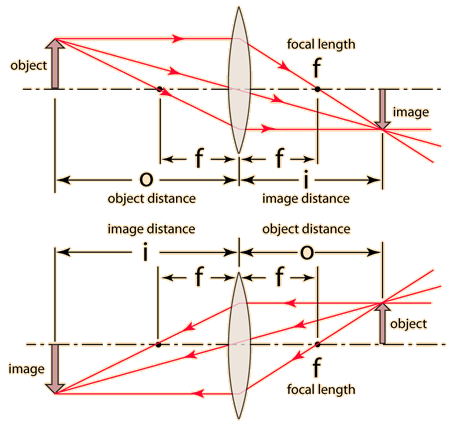 |
The object point and image piont of a lens system are said to be conjugate points. Since all the light paths from the object to the image are reversible, it follows that if the object were placed where the image is, an image would be formed at the original object position. |
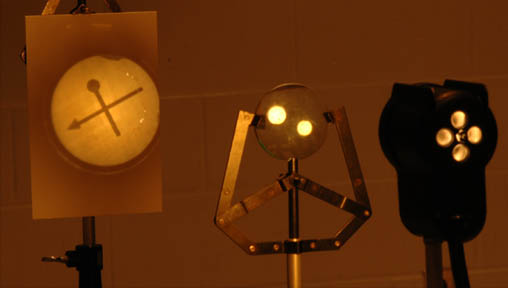
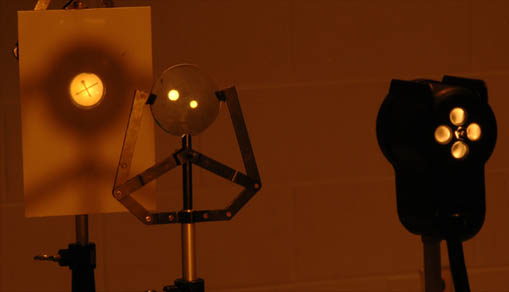
| Image formation |